Last monday I said my goodbyes to Orkney, as I took the Pentalina ferry from St Margaret’s Hope to Gills Bay one last time. After 4 summers spent in Orkney collecting photo-ID data on the harbour seals in Widewall Bay and Burray, it was time for me to pack my bags and head down to St Andrews. This last season is not quite finished, but I have left in the capable hands of my colleague Emily, who will take over for what’s left of this month of July. By the end of it, most of the pups will be weaned and juveniles and adults will be ready to start or will already be well into their annual moult.
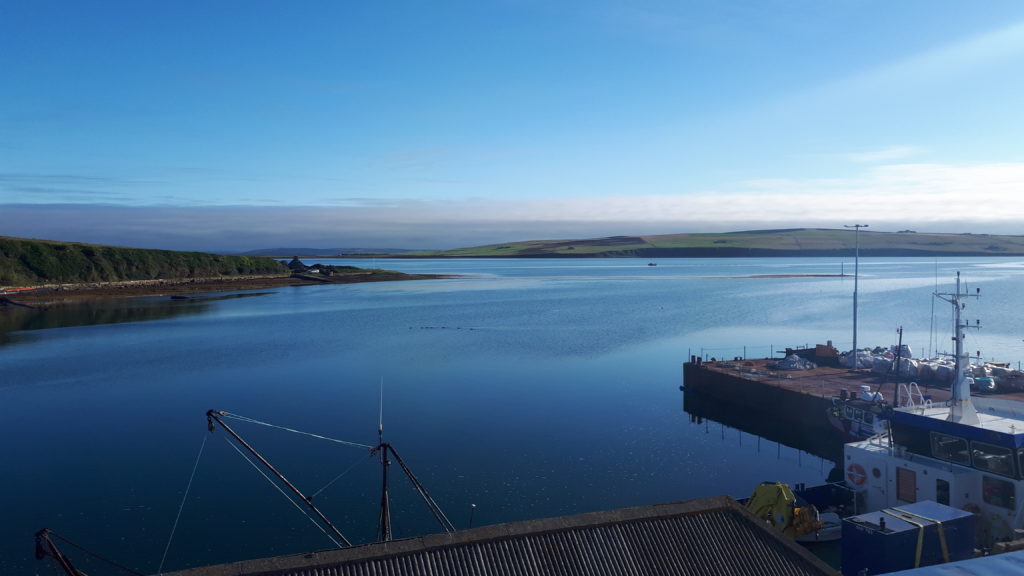
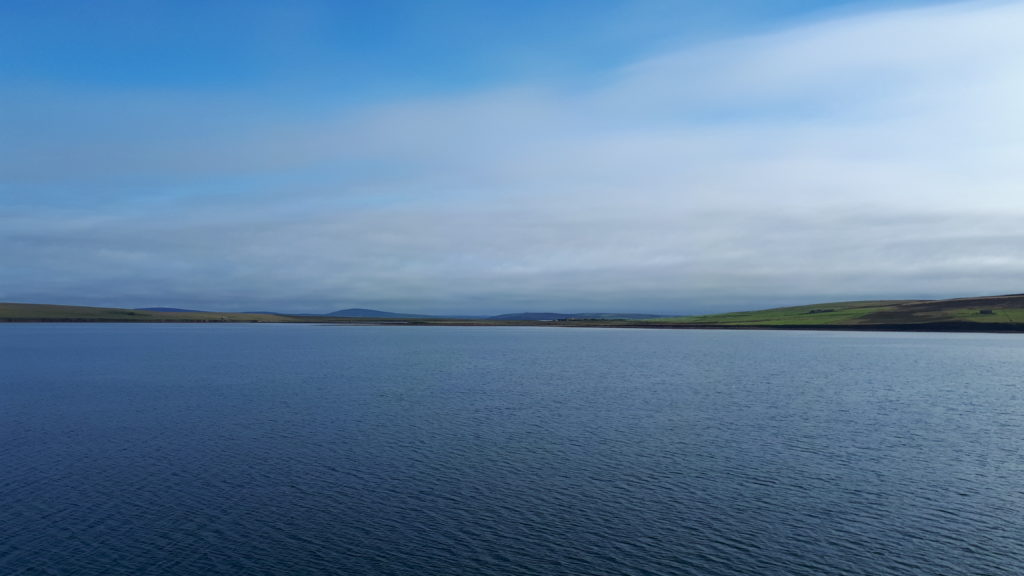
The last day I went out to get data on my own was on a friday, and what a beautiful day that was! The sun was shining and it felt like proper summer! Luckily it was early enough in the day that it was still cool and not too hazy, otherwise it is really tricky to get photographs of the seals that are actually in focus! Another challenge of these hot and calm days, especially when the tides are not very big, is that the seals will generally not move AT ALL. And when I mean not at all, I mean a seal will be in the same position, belly up and not lifting her head up even once. They can be in the same position for the 3 hours one is observing and trying to get pictures. It is not very convenient for us but highly convenient for the seals, that’s for sure!
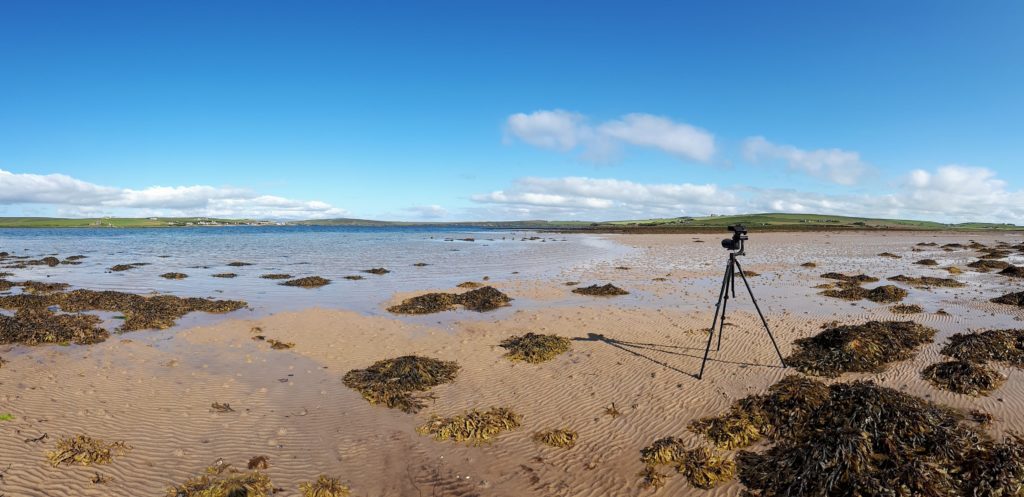
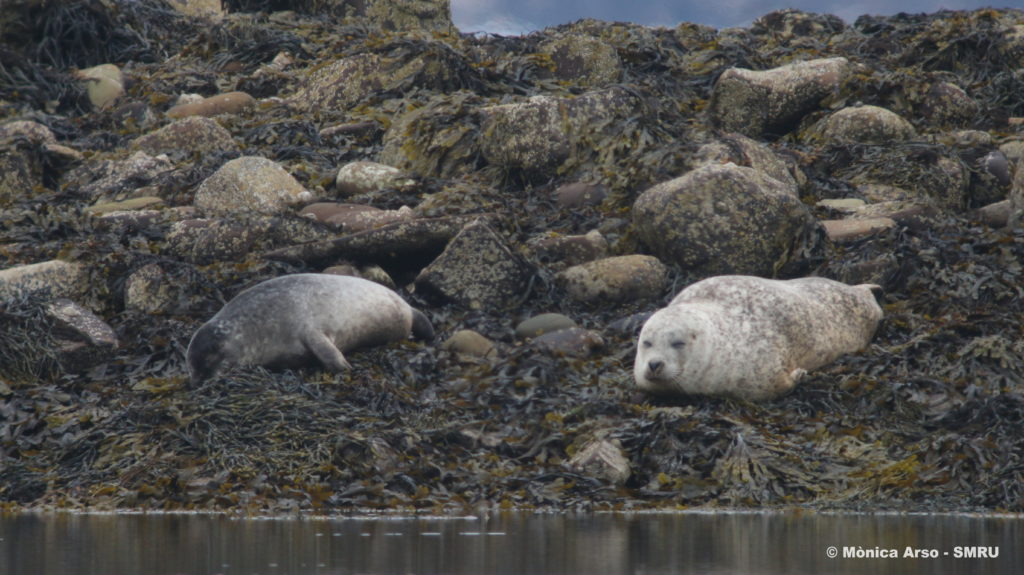
Really quiet days come with little disturbance from weather elements, which means any other sound will be heard by the seals and it has the potential to wake them up. On that day, there were some Eider ducklings at the haulout site in Widewall Bay, and any time they made some noise they managed to wake up a couple of sleeping seals, which got a proper startle!
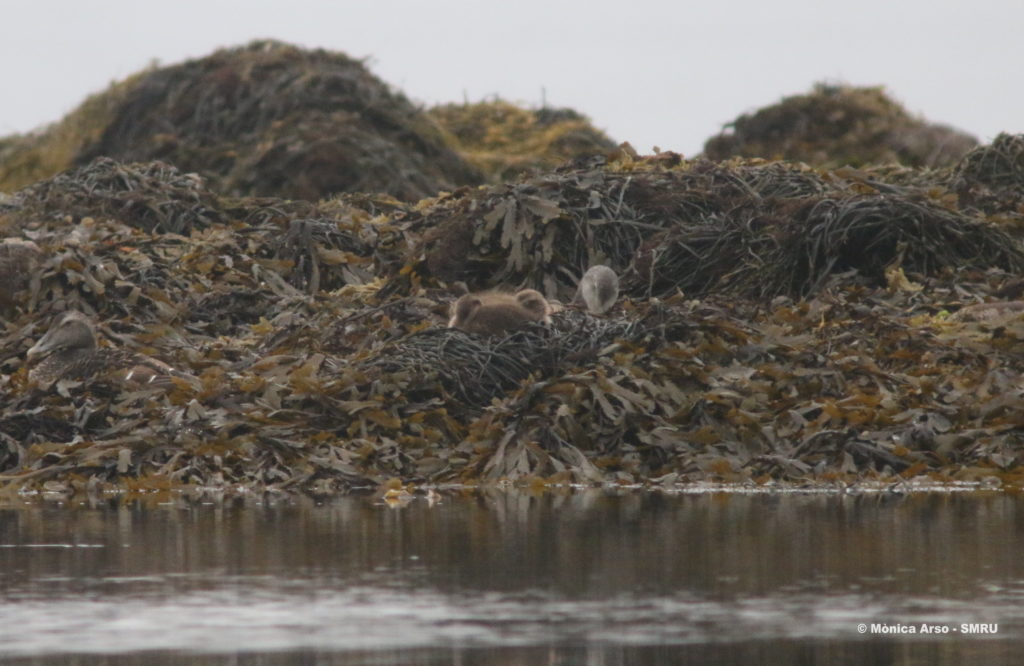
That last day I managed to visit all three main sites, photographing a large proportion of the seals resting (yes, some of them were asleep and impossible to photograph). By this time in the season, the juveniles are looking very ready to moult, looking uniformly brown and feeling itchy… If it gets too hot but you don’t want to get into the water completely, you might as well just dip your head in…
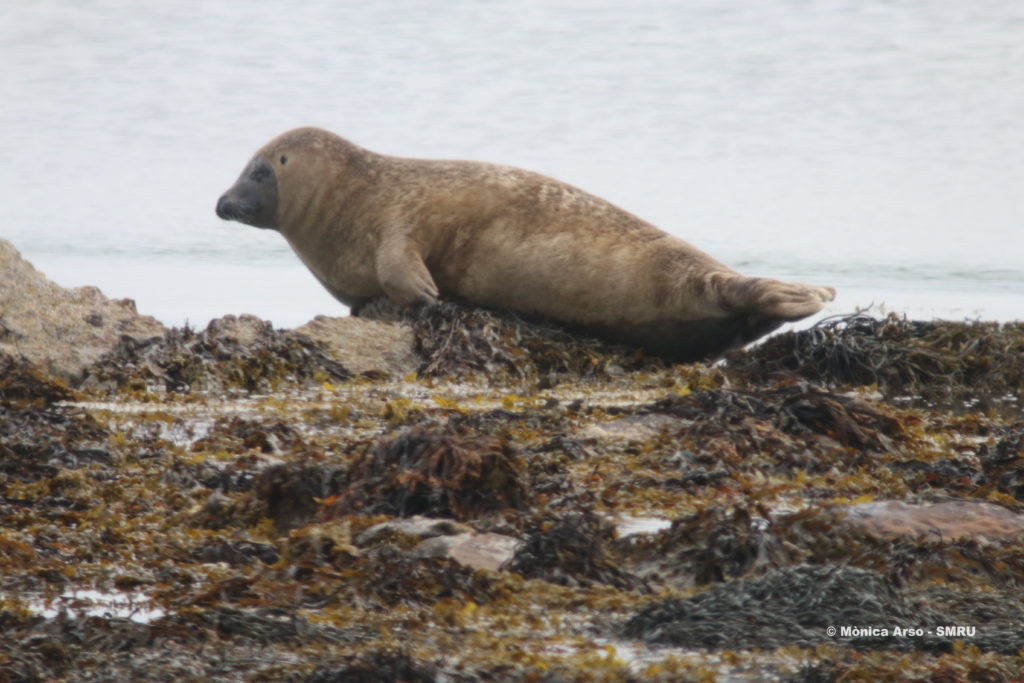
The pups that were born first are now about 4 weeks old, and probably close to being weaned. They have gone from being a bag of skin and bones with little blubber to big round balls of fat. The lactation period might seem short (about 24 days; Bowen et al. 1992, 2001) compared to other mammals, but it is highly efficient and intense, as harbour seals secrete large volumes of energy-dense milk with 40-60% fat. Female harbour seals do not have enough body energy stores to fast throughout the lactation period. To make up for the energetic cost of lactation, females will forage during that time, starting with short foraging trips lasting only a few hours about a week after giving birth.
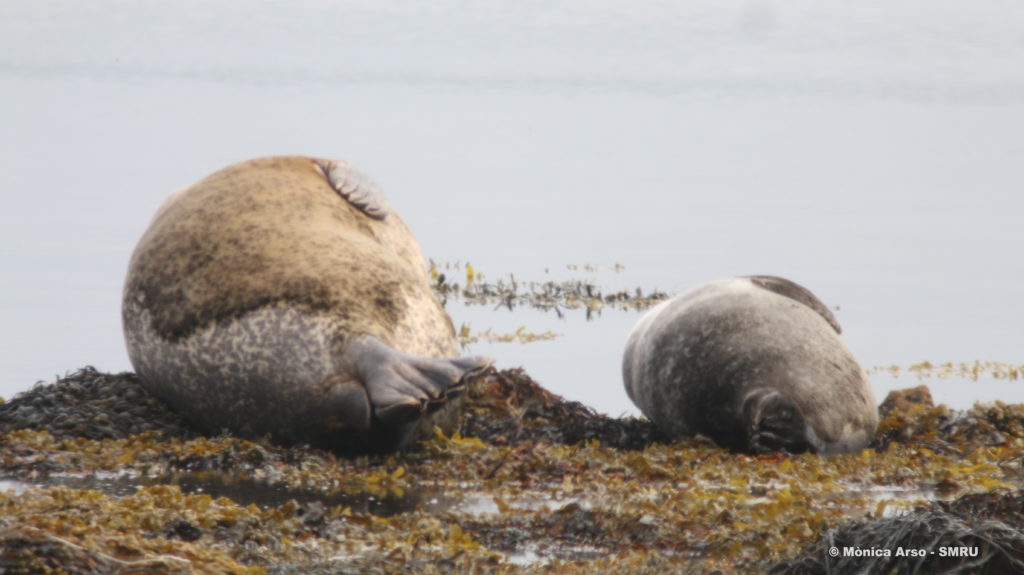
Through this project we have been able to gather information on individual seals over 4 separate summers. This longitudinal individual data is key to figure out population dynamics questions, which is the same as saying we are trying to answer questions about what is causing the numbers of harbour seals to go up or down in different areas. Are there not enough pups being born? Are these pups surviving as one would expect for a seal? What about the juveniles or the adults? Or are there any differences between males and females? We might not have enough data to answer all these questions given the length of the study (4 summers is not much compared to how long seals live), and the limitations of following pups onto adulthood, but we are hoping to be able to answer some of them.
There are other interesting facts associated with the data we collect. We can see, for example, differences in how females succeed at pupping every summer. Some will pup earlier than others in the season, some will not pup in a given year, some will not manage to wean a healthy pup while others end up weaning pups that are bigger then the one-year-olds.
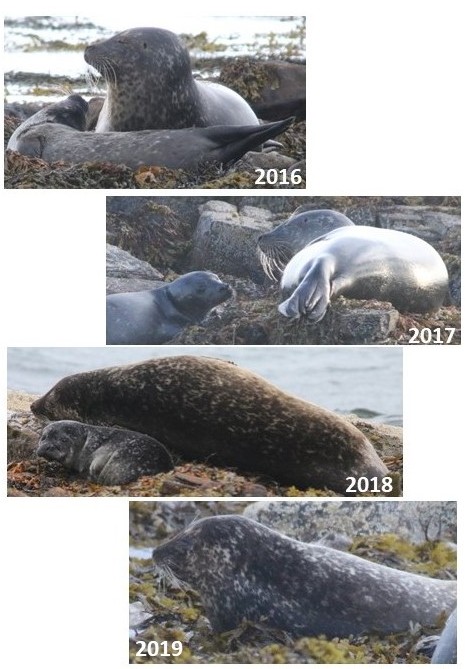
As an example, below are two photographs of Or118 and her pup from this year. The time difference between the photographs is 3 weeks. And check how much bigger the pup is by then!
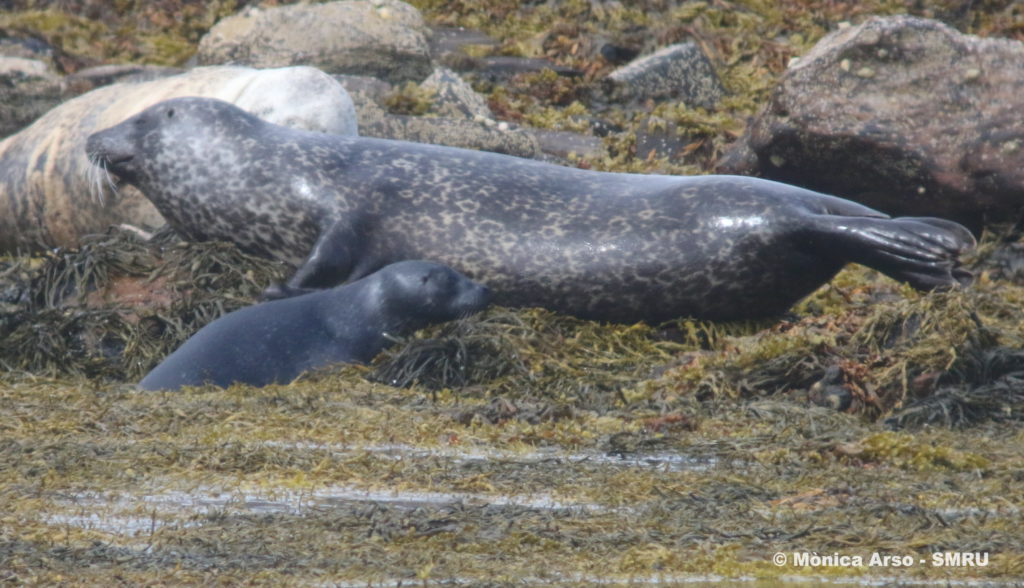

Four summers of observing the same seals has other rewards, as one gets “to know” the different individuals. By this I mean not only learning to recognize them in the field but also noticing that different seals do different things, and these differences in behaviour sometimes repeat across years. Some seals seem to have favorite spots to haulout, as they will repeatedly be found in that elevated rock, day after day and year after year, like Or057 in the picture below. Different seals are more or less tolerant to having other seals nearby, and females might be more or less patient with approaching pups.
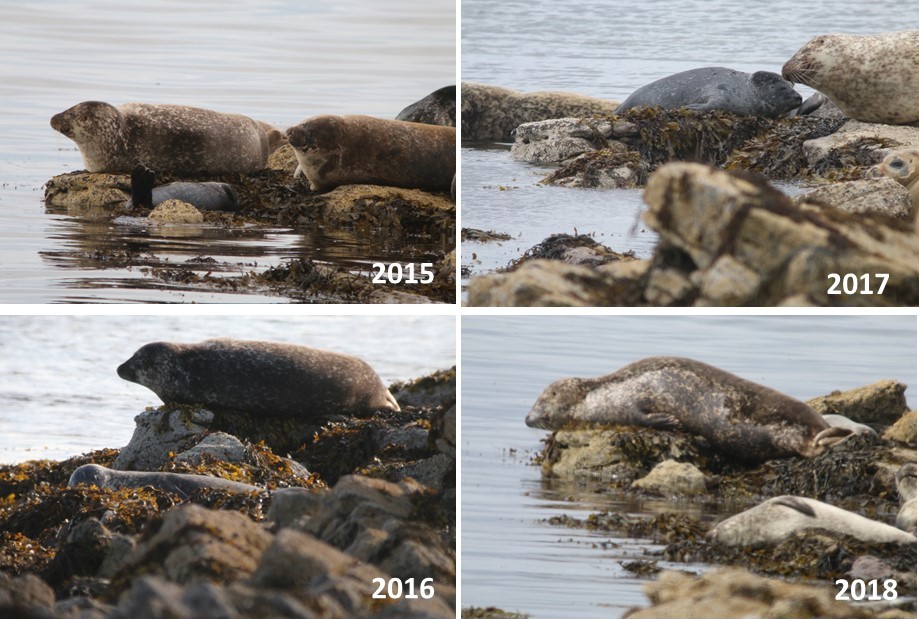
In a way that does help to collect data every summer because one can kind of predict what certain seals might do next. There are some behaviours that generally apply to all seals too. For example, seals do not like heavy rain (who would have thought?), and will slowly (or not so slowly) leave the haulout site and return to the water if there is too much rain. Also, seals will tend to follow a pattern of movements within the haulout site at different times of the tide, and depending on how close to neap or ebb tides it is in the cycle. When females come out of the water with a pup, there is a short window of opportunity to get the photographs done, as the female will position herself quickly for the pup to suckle but then will lay with her head down and thus will make it impossible to get a picture.
I am taking with me all of this knowledge and fieldwork memories, which I am sure will remain with me for a long time. Now, however, it is time for some office work to deal with photograph processing and analysis. Let the fun bit begin!
Written by Monica
References
Bowen, W.D., Oftedal, O.T., and Boness, D.J. 1992. Mass and en-ergy transfer during lactation in a small phocid, the harbor seal(Phoca vitulina). Physiol. Zool.65: 844–866
Bowen, W.D., Iverson, S.J., Boness, D.J., and Oftedal, O.T. 2001.Foraging effort, food intake and lactation performance depend onmaternal mass in a small phocid seal. Funct. Ecol.15: 325–334
